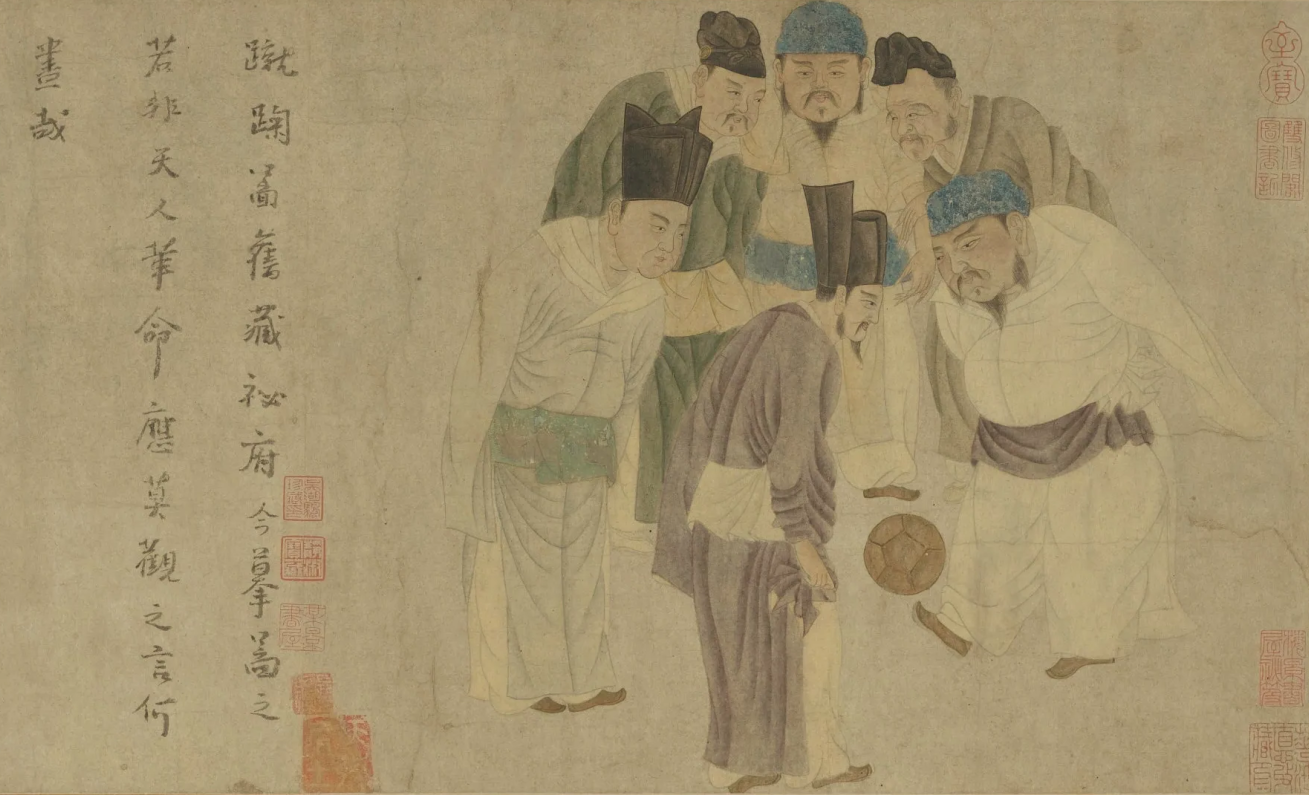
Football has reached even the most remote parts of the world, emerging as one of today’s hottest topics. About 2,500 years ago in China, there was a similar game called “cuju”. According to the International Football Association, cuju is considered the origin of football as a sport.
“Cu”, meaning “to kick”, and “ju”, referring to a leather ball stuffed with feathers, gained popularity during the Warring States Period (476-221 BC). At that time, cuju was used to train military cavalrymen (骑兵) because of its intense and competitive nature.
During the Han Dynasty (206 BC-AD 220), cuju’s popularity expanded from the army to the royal courts and upper classes. The Han emperor Wu Di was known to enjoy the sport. At the same time, the rules of cuju were formalized, leading to standardized games. Cuju matches frequently took place within the imperial palace.
The sport was improved during the Tang Dynasty (618-907). Firstly, the feather-stuffed ball was replaced by an air-filled ball with a two-layered hull (壳). Additionally, two different types of goal posts were introduced: One type consisted of posts with a net between them, and the other consisted of just one goal post in the middle of the field.
Cuju thrived in the Song Dynasty (960-1279) due to social and economic growth, making it popular among all social classes. Professional cuju players became well-known, and the sport gained a commercial aspect. There were two types of professional cuju players: those trained by and performing for the royal court, and those who were civilians earning a living through cuju. In large cities, cuju organizations called Qi Yun She or Yuan She, considered the earliest professional cuju clubs, were established. Members included both cuju enthusiasts and professional performers. Non-professional players had to appoint a professional as their teacher and pay a fee to join, ensuring income for the professionals.
Cuju began to decline during the Ming Dynasty (1368-1644), and the 2,000-year-old sport eventually disappeared.
原创编写 版权所有 侵权必究! 每日更新 个性化阅读 英语飙升!
1.1.What was the main purpose of cuju during the Warring States Period?
A For entertainment.
B For military training.
C To keep people warm.
D To strengthen social ties.
解析:选B。细节理解题。根据第二段最后一句“At that time, cuju was used to train military cavalrymen because of its intense and competitive nature.”可知,战国时期蹴鞠主要应用于军事训练。故选B。
2.2. What can be inferred about the status of cuju during the Han Dynasty?
A It was a sport only for the military cavalrymen.
B It was a popular sport among the common people.
C It was enjoyed by the royal court and the upper classes.
D It was a sport that had no standardized rules.
解析:选C。细节理解题。根据第三段第一句“During the Han Dynasty (206 BC-AD 220), cuju’s popularity expanded from the army to the royal courts and upper classes.”可知,汉朝人把蹴鞠视为“治国习武”之道,不仅在军队中广泛展开,而且在宫廷贵族中普遍流行。故选C。
3.3. In which dynasty did cuju begin to take on a commercial edge?
A The Warring States Period.
B The Han Dynasty.
C The Tang Dynasty.
D The Song Dynasty.
解析:选D。细节理解题。根据第五段第二句“Professional cuju players became well-known, and the sport gained a commercial aspect.”可知,宋代随着蹴鞠运动在社会上的普及,它也逐渐展现出了自身的商业价值。故选D。
4.4. What happened to cuju during the Ming Dynasty?
A It started to disappear.
B It gained popularity.
C It represented imperial power.
D Its rules were improved.
解析:选A。细节理解题。根据最后一段“Cuju began to decline during the Ming Dynasty”可知,蹴鞠在明代开始衰落。故选A。